The career website is the oldest and best-known source of employer branding. Through technology we are changing the way we reach out to job-seekers through social media, internet and smartphones. Yet unfortunately the majority of career website have so far stayed in the condition they were many years ago.
A career website is a channel owned by an individual company and is therefore an essential component of employer brand, which can be used to attract the right talent, in an evident and consistent way. It’s not only about pictures, videos and job descriptions. It’s also about functionality and user experience. To see how you’re doing, when evaluating your career website you can ask yourself following questions:
- Is our career website appealing, helpful, useful, compelling and persuasive?
- Can our career website and job descriptions be found by the right audience. Are we going to appear in search engine results as the most relevant?
- Are we converting candidate attention into interest and action? What’s is the conversion rate of click through to apply and what is the quality of applicants?
- Do we have job alerts? Can a job seeker sign up to join our talent community or subscribe for company blog or newsletter?
- Does our career website have ‘calls to actions’?
- Do we have an opt-in talent network form?
I’m often hearing from employers that career websites are not that relevant for candidates anymore. However, I personally don’t agree. Career websites are a significant and vital piece of a job-seeker’s choice.
During my career I’ve spoken to hundreds of candidates, and from my experience the journey of a candidate has mostly looked as following:
Google search > job description > career/employer website > and it follows….
How the candidate journey continues, depends on how much of the candidates’ interest we have thanks to previous touchpoints. My interest in applying for a job would be influenced in exactly the same way! If the job description and career website sucks, then:
- Do I want to work for a company which don’t consider those parts as important, would I/my role be important there?
- If they are an innovative company as they are saying, why they are behind on trends and technology?
- Why is their job description so boring and ‘old-school’, not relevant nor giving enough information?
- If their product website follows the convince-and-convert practice, then why not apply the same practices to their career/employer website?
Those would be my questions before I decide whether to apply, so what do you think would be the result in my case? Would I apply or not?
In this candidate-driven time, I hear people around me complaining about how hard is to attract new talent, how employee culture is hard to handle, how millennials quit great jobs or employees are not engaged … but I guess it’s time to stop whining and start doing something about that. It’s time for a new approach to attracting and retaining talent!
So speaking about career websites, companies need to be compelling, persuasive and deliver a user experience that will turn job-seeker awareness into consideration into interest and from there into action (through desktop, tablet or smartphone).
To make your career website drive candidates to action, you should know your target audience, you should create persuasive content, follow user experience principles and sell with influence and integrity.
Who is your target audience?
As companies are trying to attract talent from all around the world, I believe that one of the key factors behind a globally-success employer brand in the future will be adapting your career website to foreign talent markets and their cultural traits. On the idea of culture differences and their importance for employer branding, you can read my previous blog to learn more.
Let me give you an example of how a career website can work to target candidates from the Benelux region.
My main source to identify cultural traits is Hofstede’s six key psychological dimensions to patterns of thinking, feeling and behavior from childhood and how it manifests: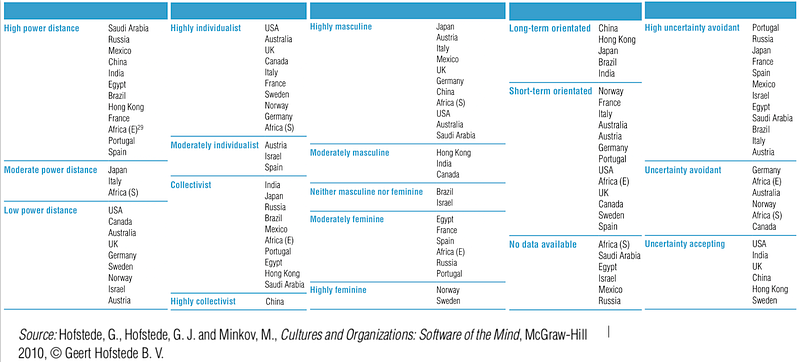
Inspired by my own 7 years experience in recruitment, by my previous studies in sociology and the ideas of web psychologist Nathalie Nahai, I applied research in online consumer behaviour and online persuasion and I recommend the strategies below for your career website if you want to attract a Benelux audience from their culture perspective: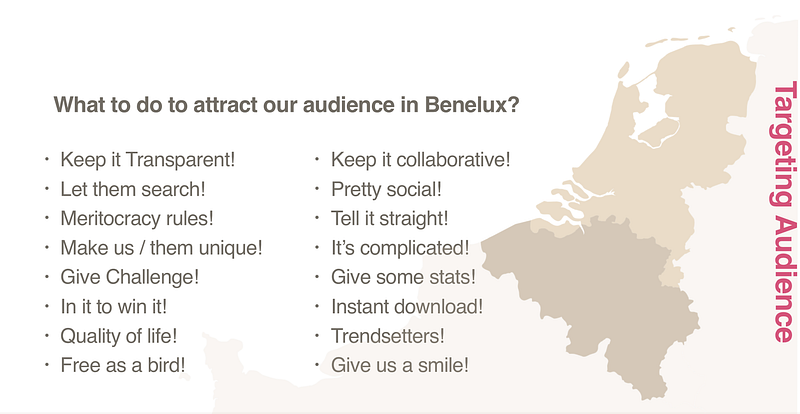
Now of course employer branding is not only about tailoring your career website to culture traits. Another important aspect is: individual differences
As Nathalie mentioned, not only gender, but personality can greatly influence what we do online (social media interactions, emotional responses, reactions to persuasive tactics).
Understanding your audience’s personalities, attitudes and values can give you a significant advantage over basic demographic and persona-based approaches. Because your personality not only influences the language you use and respond to, it can also shape many of the behaviours you express online. So, if you can understand your audience’s behaviours, mirror their linguistic preferences and adapt your message to match their traits, you will be much more successful in attracting, engaging and converting them.
There are many reliable personality tests in that regard. The Big Five is one of the most established within behavioural sciences. Together with other research, they established these personality traits: openness, conscientiousness, extraversion, agreeableness and emotional stability, honesty-humility.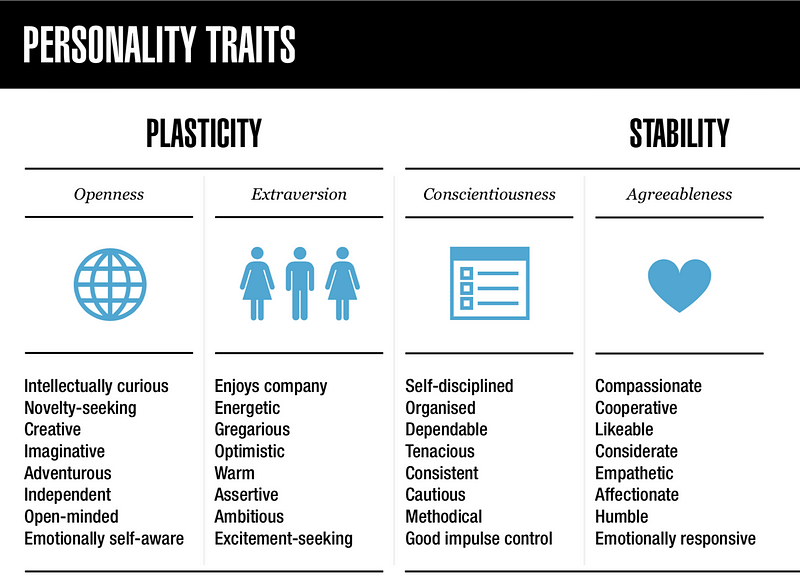
So… here’s how we can adapt our message towards those personalities:
Persuasive Content
Persuasion is a powerful tool to influence job-seekers’ attitudes, beliefs, motivations, intentions and behaviours. Its role is to connect two sides towards a mutually beneficial outcome. Persuasion influences the decision-making of job-seekers. I highly recommend reading Kahneman’s Thinking, Fast and Slow.
We have two type of job-seekers:
- High need for cognition (job-seekers engage in and enjoy thinking): access information the easy way. Information should be presented in a structured, fluent way, allowing them to drill down into the details if they want to- tabbed or drop-down menus to visually break up the information.
- Low need for cognition (time- and attention-poor job-seekers): designing experiences, messages and interactions that are more affective, emotional, and influential — I will explain more in the last part of this blog. (N. Nahai)
How I would do it: the content of the job descriptions (as the average attention span is around 8 sec), I would tailor towards the second type of job-seekers and the main page of the career website around the first type. Why I think this: if we create enough awareness, consideration or interest through the job description, job-seekers would find the time and attention to explore the main page, and other media channels you would recommend to them. They will invest their time and effort searching for as much information as possible about your company as they are kept interested and as they gain trust. You can read more about going through levels of the mind with persuasive tactics in my previous blogs (part 3 and part 4)
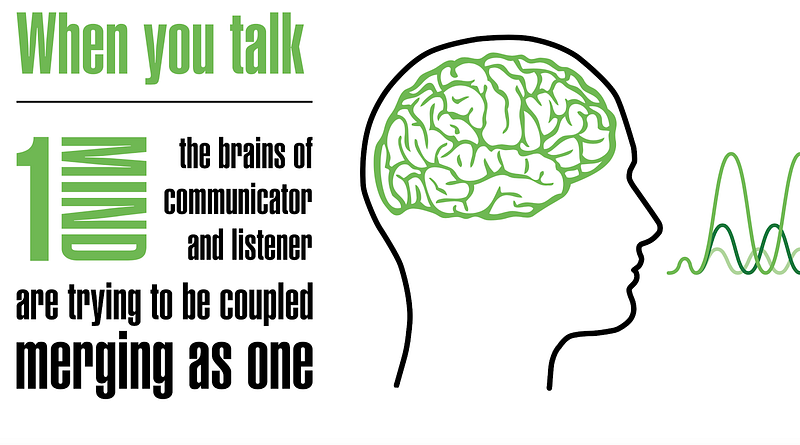
SEO: Optimize your website and job description
To be at the top of job-seekers’ search results you have 2 choices: pay for ads or follow SEO principles. Google has around 200 elements which impact the results and where in the search results you will stand. I don’t know them all but those I have learnt I will share here:
- Titles: the job page title and title of the job ad should contain keywords that the job-seeker has typed into the search engine
- URL: The search terms that the job-seeker types into the search engine should be in the web address or URL of the result.
- Keywords- Embrace LSI: keywords in content, keywords in title and description tags, page covers topic in-depth
- Snippets : Increase the length of your meta descriptions (from 160 characters to 230 characters). Optimize for featured snippets.
- Find a shoulder niche: break your backs trying to obtain high-quality, relevant backlinks.
- Focus on voice search optimization
- Focus on natural language and readability, content length and high word count
- Get serious about YouTube SEO
- Strategically link to micro influencers
Colors:
Even colors can be used to influence job-seekers’ perception of whether your brand is trustworthy, valuable or even authoritative. But it’s not that straightforward, since that can be influenced by our cultural, personal and physical background.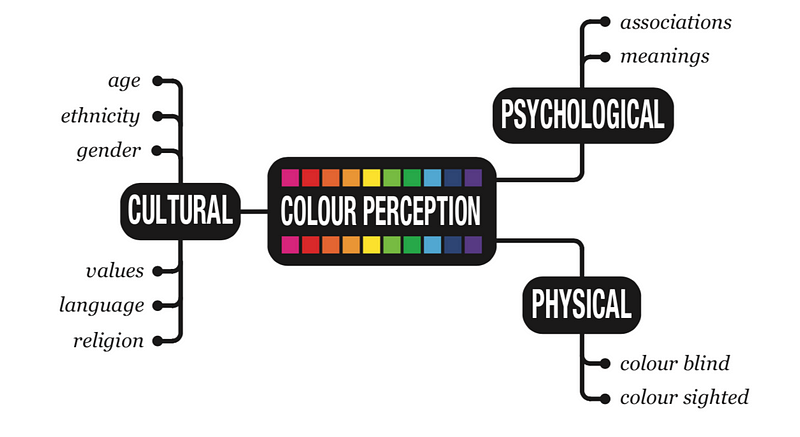
Career Website, Images, Video and Social media:
When we think of a career website, there are many things which can influence what would push a job-seeker to action. As people are using different devices, browsers and resolutions, definitely think about responsive design because I believe it influences the click-through rate.
To have a persuasive career website we first have to think about who is going to look at it (demographics and psychographics) and what their purpose is(why). It’s important to remember that you only have a few critical seconds to be persuasive and create a positive impression — if you fail to engage them, they will move on.
The references of job-seekers depend a lot on these factors:
- Gender differences
- Cultural differences
- Linguistic (language and chosen words)
- Motion
- Information architecture
- Usability
- Calls to action
- Risk, Trust and Privacy

Source: Webs of Influence: The Psychology of Online Persuasion, Nathalie Nahai
Images:
The way we present our company, open roles and employees can significantly impact whether job-seekers decide to apply. Mostly we cannot talk or meet the job-seekers in person and therefore we have to bring the image of our company to them.
Social Media:
Social media are main channels by which to connect with potential talent. How companies can adapt their content and tailor their message for different social channels is a significant difference between successful employer branding and not so successful campaigns. Job-seekers have different views and perceptions on different social media channels. Some content is suitable for career websites and LinkedIn but maybe cannot be shared on Facebook or Twitter. For every piece of content we share, we are getting back a reaction in a different form. As a company we should evaluate those responses to see what works and what not. “In fact, social psychologist Elaine Hatfield and her colleagues proposed that we can actually induce emotions in others by synchronising our expressions, postures, vocalisations and gestures with those of our intended audience. This means that if you know who you’re targeting and can mirror their preferences accordingly, you will be more likely to produce content that induces the desired emotional response.” (N. Nahai, 2017)
Video:
Compared to other media types on the web, video is unique in the immediacy with which it can convey a vast amount of emotional and informational content to its viewers. It creates the feelings of connection and community, which can help generate word of mouth and amplify the reach of your message. Unlike images or copy, video (and audio) sets the pace at which a story or message is delivered. Videos provoke curiosity, last 30 secs to be salesy and self-serving in tone to provoke an emotional response and in the end you can maybe invite the job seeker to click to see what will happen. Believe it or not, scientists have actually conducted research to examine why we spend so much time watching videos of our feline friends. As it turns out, even a short clip can be enough deliver an emotional payoff, with participants reporting that they felt more energetic and positive and less anxious, annoyed or sad. (N. Nahai, 2017)
Sell with integrity
Persuasion principles and tactics will lead you towards mutual benefit. If you can align the goals of your company with those of job-seekers, you will design an enjoyable experience for both of you but also a place for advocacy and trust.
The first thing job-seekers will do on your career website is subconsciously scan the page for cues to find out what your career website is all about and how they should interact with it. Try to design your career website having this in mind and try to predetermine their actions to create a fluent, intuitive and mutually successful experience.
The behaviour chain:
Developed by psychologists to understand how persuasion is structured over time, the behaviour chain is a three-phase strategy:
- Discovery:
- Are people aware of your company and what it means to work with you?
- Are you using all channels available to you?
- Why should people share your content and recommend your company as a place to work?
- Is it easy for job-seekers to visit your career website, or interact with recruiters or other employees?
- Are you encouraging job-seekers to apply?
- How can you give job-seekers a taste of your company and how is it to work there?
2. Superficial involvement:
- How are you encouraging job-seekers to interact with you? (job alerts, sign-up for a free chat, downloading a white-paper, subscribing to your talent community or newsletter)
- What kind of recruitment process are you providing to job-seekers after they apply with their email or social profile?
- How can you build in value, reciprocity, positive reinforcement and a gentle nudge to encourage them to become your applicant/employee?
3. True commitment:
- Whether you’re asking job-seekers, employees to comment, rate, follow, like or review or you want employees to generate content to share with their peers, how can you encourage them to contribute on a more regular basis? What reward mechanisms are in place to elicit and reinforce these behaviours?
- How can you optimise your outreach (content, marketing, social media strategy) so that existing job-seekers feel moved to share your content with their friends?
- Once job-seekers are actively in touch with your company, how can you encourage them to engage more and stay engaged during all recruitment process? What reminders or notifications can you use to nudge people in a way that is useful, as opposed to irritating?
- How are all job-seekers treated? Would they come back to you and apply again, would they recommend you to somebody else?
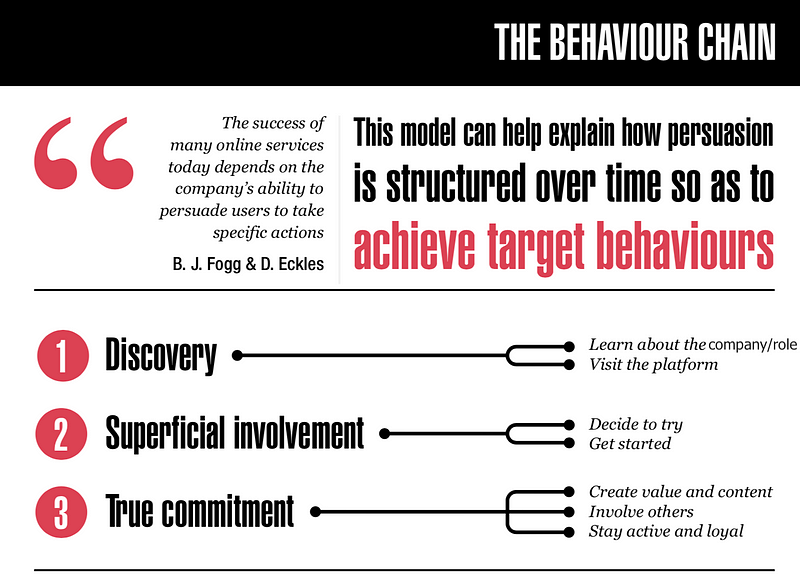
Thank you for reading this ultimate guide. As you probably guessed, my main source was a book of Nathali Nahai, which I’m highly recommending if you want deep dive to this topic, as it is exactly this book which inspired me to do research into persuasion and marketing practices and their application to human resources and recruitment.
However, as we all know, attracting and retaining talent is becoming more difficult with countless job choices, talent skill shortages, changing generational attitudes at the workspace, global mobilization and the challenges which technology is bringing mean that companies need to start finding solutions and start directly applying them. Not acting on these changes will make companies lose crucial momentum which will decide the success and survival of the company. We can all create our future of work.
In what kind of future do you want to work?
This post originally appeared on Medium.com

